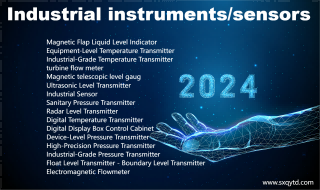What key functions does the float level gauge have as the preferred equipment to ensure the safety and reliability of liquid storage tanks?
[ 信息发布:本站 | 时间:2024-03-12 | 浏览:591 ]

Float level gauges serve as preferred equipment for ensuring the safety and reliability of liquid storage tanks in various industrial applications. Their key functions contribute to maintaining optimal conditions, preventing overfilling, and enhancing overall safety. Here are the key functions of float level gauges in ensuring the safety and reliability of liquid storage tanks:
-
Liquid Level Monitoring:
- The primary function of a float level gauge is to monitor and indicate the liquid level within a storage tank. This real-time information is crucial for operators to assess the current state of the tank and make informed decisions to maintain safe operating levels.
-
Preventing Overfilling:
- Float level gauges are designed to prevent overfilling of liquid storage tanks. When the liquid level reaches a predetermined threshold, the float mechanism triggers an alarm or an automatic shutdown system, preventing potential spills, equipment damage, and safety hazards.
-
Continuous Level Measurement:
- Some float level gauges offer continuous level measurement rather than discrete switch points. This continuous monitoring provides a more detailed and accurate representation of the liquid level, contributing to precise control and preventing sudden level changes.
-
Multiple Switch Points:
- Certain float level gauges are equipped with multiple switch points, allowing for the monitoring of different liquid levels within the same tank. This functionality is valuable in applications where varying levels need to be tracked for process optimization and safety.
-
Redundancy and Reliability:
- Float level gauges often incorporate redundancy features to ensure reliable operation. Redundancy contributes to the continued functionality of the gauge even in the event of a component failure, minimizing the risk of undetected issues.
-
Mechanical Operation:
- The mechanical operation of float level gauges, often without the need for external power, contributes to their reliability and ensures that they can operate in diverse environments. This mechanical simplicity reduces the risk of electrical failures.
-
Compatibility with Various Liquids:
- Float level gauges are designed to be compatible with various liquids, including corrosive substances. This versatility allows them to be used in a wide range of industries where different types of liquids are stored.
-
Ease of Installation and Maintenance:
- Float level gauges are typically easy to install and require minimal maintenance. Their user-friendly design facilitates straightforward setup, reducing downtime and contributing to overall operational efficiency.
-
Environmental Adaptability:
- Recognizing that liquid storage tanks may be exposed to harsh environmental conditions, float level gauges are often constructed from materials that resist corrosion and withstand temperature variations. This adaptability ensures reliable performance in challenging environments.
-
Remote Monitoring:
- Some float level gauges support remote monitoring capabilities, allowing operators to access liquid level data from a central control room. This remote accessibility enhances safety by minimizing the need for personnel to physically inspect tanks in potentially hazardous environments.
-
Integration with Alarm Systems:
- Float level gauges are often integrated with alarm systems that trigger alerts when the liquid level approaches critical points. These alarms serve as early warnings, allowing operators to take corrective actions before safety limits are breached.
-
Compliance with Industry Standards:
- Float level gauges are designed to comply with industry standards and regulations. Ensuring compliance with safety standards enhances the reliability of these gauges in safeguarding liquid storage tanks.
In summary, float level gauges contribute to the safety and reliability of liquid storage tanks by monitoring levels, preventing overfilling, offering continuous measurement, incorporating redundancy, operating mechanically, being compatible with various liquids, facilitating easy installation and maintenance, adapting to environmental conditions, supporting remote monitoring, integrating with alarm systems, and complying with industry standards. These key functions collectively make float level gauges an essential component for ensuring the secure and dependable operation of liquid storage systems.
Ms.Mary liu (Project Manager)
Shaanxi Qianyi Tuoda Technology Co., Ltd
Email:transducer@sxqytd.com
Phone/WhatsApp/ Wechat: +8618829679311
Address: Building 4, Hi-tech Development Zone,
Baoji City, Shaanxi Province, China
Https://www.sxqytd.com
Magnetic Level Gauge | Magnetic Level Indicator | Magnetic Float Level Gauge | Magnetic Flap Level Gauge | Magnetic Liquid Level Gauge | Magnetic Level Instrument | Hydrostatic Level Transmitter | Hydrostatic Level Gauge | Static Pressure Level Gauge | Radar Level Gauge | Radar Wave Level Gauge | Radar Level Meter | Guided Wave Radar | Ultrasonic Level Gauge | Ultrasonic Level Meter | Ultrasonic Level Transmitter | Magnetostrictive Liquid Level Meter | Magnetostrictive Level Meter | Magnetostrictive Level Sensor | Pressure Transmitter | Diffuse Silicon Pressure Transmitter | Differential Pressure Transmitter | Pressure Sensor | Temperature Transmitter | Pt100 Sensor | Temperature Sensor
